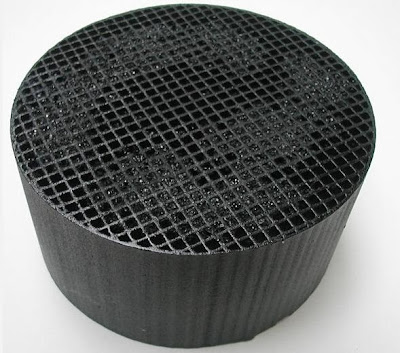Let's look at some signs that the stove is not being operated correctly.
Example 1.
Fly-ash masking
This occurs when burning materials that produce large flakes of char, like wrapping paper and cardboard.
Example 2.
Plugging
Plugging is a build-up of soot, creosote and/or fly-ash within the combustor’s cells.
In most cases, this happens because light-off was not achieved before the stove’s by-pass was closed.
This means the catalyst was not at the temperature necessary to receive and burn the inlet gases.
In most cases, this happens because light-off was not achieved before the stove’s by-pass was closed.
This means the catalyst was not at the temperature necessary to receive and burn the inlet gases.
Example 3.
Soot masking
Refueling with wet or unseasoned wood will shut the catalytic combustor down at once.
This too can result in the combustor’s cells plugging with fly-ash and/or creosote.
The stove will run sluggish.
This too can result in the combustor’s cells plugging with fly-ash and/or creosote.
The stove will run sluggish.
Note:
Cleaning the catalytic combustor will usually correct these conditions and there are several methods of cleaning the catalytic combustor depending on its condition.
Cleaning instructions will be covered in the next posting.
Cleaning the catalytic combustor will usually correct these conditions and there are several methods of cleaning the catalytic combustor depending on its condition.
Cleaning instructions will be covered in the next posting.




No comments:
Post a Comment